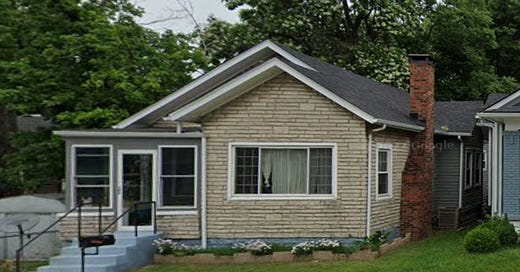JEFFERSONVILLE, INDIANA — A black-and-white photograph captured a desperate scene in the river city around the third week of January 1937:
Water is backing up in the sewers and spilling over into Spring Street, where a crew of workers gather with hand tools and machinery to pump the excess water into the Ohio River. There is a break in the rain, as the dozen or so men wearing jackets and caps join in the task of diverting water from the city street to a rising river.
A man wearing a fedora and carrying an umbrella is nearby, head turned toward the workers, perhaps assessing their pumping operation and wondering what more is in store for the town. The street is otherwise mostly empty, with dark buildings in the background, one of them a Chevrolet and Buick dealership.
Arthur Lee Smith
Arthur Lee Smith remembered the pumps in action that January.
“[I]t just kept on raining and you had your upper river valleys all full, and they had these big pumping stations at Spring and Market.”
He added, “[T]he old horse-drawn steam pumper, which had been retired, was brought out and was put back in operation. There that old steam pump was pumping, pumping the water.”
The deepest water stood at Market and Walnut streets, as Arthur remembered.
“This side of the levee — well, on top there — they had a big steam engine and three or four gas-powered pumpers there pumping. And, as I say, it kept on raining and raining, and the water was out there near the levee, a couple three feet below the levee.”
Catherine Richardson
Catherine Richardson and her husband and two daughters lived at 122 Walnut Street, one house from the heavy flooding at the corner of Market and Walnut.
“There was a city engineer advising them,” Catherine later said, “and they decided they’d better pump these low places.”
They placed an old tractor that belonged to a man named Thomas O’Neil at the corner, she recalled. O’Neil ran a machine shop, “and he contracted for work that involved the use of this tractor.”
There was only one local man “who could make it run,” said Catherine, “a man by the name of Pat Bains, and he was one of the town’s characters.”
She continued, “So they got Pat out of jail — for his habits caused him a great deal of trouble — and brought him and put him on the tractor. They decided they would have to pump that water out of the city. There was no way to let it go.”
Yet there was a certain futility to the exercise, as Catherine explained, working “against the laws of gravity” to pump water back into the river as it continued to rise up the levee.
“It posed quite a problem as to what was the best thing to do and where to do it. There were low known places all over town and there was some effort made to pump it out.”
Despite being in such a vulnerable location, the Richardsons vowed to stay put in their small house near the levee and do all they could as the river crept upward. Their big room at the back of the house contained a stove that was never idle.
“We kept eight gallons of something brewing all the time,” Catherine said, “stew, soup, chili, whatever we could get. Ollie … sent meat to us just as long as he could get to us by coming up on the levee.”
The Richardsons fed Bains and the other workers near their home, including as much coffee as they wanted to drink.
“When Pat would hold up two three-pound coffee cans at the same time, we’d fill them.”
However, keeping Pat going all day and all night required more than soup and coffee.
“Sometimes during the day he would have to have his spirits,” Catherine remembered, “and so I said to the men, ‘Now look, I’ll take care of Pat’s food and make all the coffee he’ll drink. But somebody else will have to get him what it takes to take him through the night. I can’t.’”
The source of the whiskey that kept Pat Bains working the finicky tractor that pumped water for two days and two nights remained a secret long after the flood, according to Catherine. She also recalled the large metal sheet placed beside the tractor, which served as a shield to protect the machine if, or when, the water came over the levee.
Catherine had a sense of foreboding as she watched the men pump water hour after hour. Whether rain pouring from the clouds or the Ohio River inching up the levee, the water kept coming.
Read or listen to the introduction to The 1937 Flood Journal or access the archives for the full chronology and anything you’ve missed.
FRIED BOLOGNA: Family Stories from the American Midwest and Upland South Join me for stories about my ancestors who lived, worked and traveled in the hills and along the rivers of Arkansas, Illinois, Indiana, Iowa, Missouri and beyond.






Fabulous storytelling - I feel like I’m right there with Pat waiting for the levee to break.